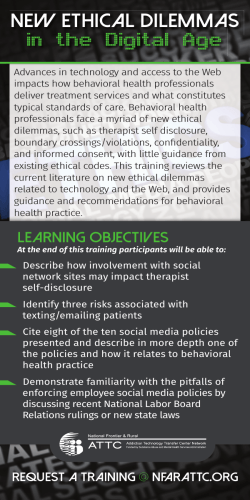
Draft Water Safety Policy Procedure
Water Safety Policy Title: Applies To: Last Reviewed: NQF Reference: Water Safety Educators, staff, parents, volunteers and children when engaging in water based activities April 2015 Next review April 2017 due: Regulation 168 and 345 Introduction Children are inquisitive when in or around water, therefore appropriate supervision is required at all times. In all experiences where children engage with water, educators must be mindful that children can drown in shallow water, with drowning being the greatest cause of accidental death in children under five in Australia. However, for every drowning that occurs, there are approximately three children admitted to hospital from near drowning accidents, with some of these children suffering some form of brain damage. While swimming pools are prohibited on the premises of a Tasmanian education and care service, this does not prohibit services from engaging in water based experiences or activities1, such as water play or swimming. Policy: At all times the health, safety and well-being of the children must be considered; with their age, previous experience and physical capabilities being taken into account. Appropriate supervision of children must be maintained at all times. It is not only large bodies of water that may pose a threat to the safety of children. Other bodies of water such as nappy buckets, toilets, water features or containers may also pose a threat to children where they are accessible or there is inadequate supervision. As part of the preparation for the activity, educators may discuss with children water safety, including what to do if they get into difficulties while in the water. Procedure: Whenever children are engaged in a water based activity1 the following procedures must be implemented: Appropriate risk assessment developed and implemented, including a review of the environment for any hazards; Always ensure appropriate supervision: o Older children are within direct sight at all times; o Where children under five are paddling, swimming or similar, children are to remain within arm’s reach of an educator at all times; Required first aid qualifications to be maintained at all times; First aid kit and other medication to be accessible at all times; Where applicable, bronze medallion requirements are to be maintained; Implement appropriate sun safety procedures in line with the services sun safe policy; When on excursion, children are to be accompanied by an educator to toilet/change areas at all times; Water Safety Policy and Procedure Page Number 1 Water Safety All containers to be emptied immediately after use and stored to prevent the collection of water or made inaccessible to children; Remember water safety skills of children do not replace adult supervision. In addition to the above the requirements, the following must also be applied: Pools or Spas Where children are to swim, at least one adult must hold a current Bronze Medallion; Ratios - where the children are in the water with a supervising adult, who is in the water with the children: o 0 - 3 years 1:1 o 3 - school age 1:2 o School age 1:5 Note: Pool lifeguards should only be used for and counted in supervision ratios if they do not have general lifeguard duties at the time and their sole responsibility is to the excursion. Ratios of children not swimming o 0 – 24 months 1:4 o 24 months – 36 months 1:5 o 36 months – 5 years 1:10 o Over preschool age – 1:15 Be aware people, toys or other floating devices may obscure your view; If you have to leave the pool or water area, even for a brief moment, you must: o ensure appropriate supervision is maintained; or o take all children with you; Read and obey all safety signs; Use a system to identify the supervising adult and children who are part of your group (e.g. hat/arm band etc.); Always check the temperature of the water before children enter; Children should not put their head under the water in a spa as this could increase the risk of entrapment in the suction outlets; Ensure long hair is tied back in pools and spas to avoid entrapment. Beach Where a beach is flagged, ensure children always swim between the red and yellow flags as they mark the safest area on the beach to swim; If you are unsure of conditions, confirm them with the life guard before anyone enters the water; Be aware of any changes in the overall weather, waves or currents; Always check the depth before entering; If wading, check for hidden rocks or sudden drop offs; If available, always read the Surf Conditions Board; Adults should always be in the water with children at the beach; If requested, everyone will immediately leave the water when requested by a lifeguard; Ensure appropriate clothing and equipment (e.g. rash vests, hats, sunscreen, bathers, towel and spare clothing) are available; Confirm children’s swimming ability with parents prior to the commencement of the excursion; To confirm the water is safe for swimming contact the Public and Environmental Health Service on 1800 671 738; At least one adult must hold a current Bronze Medallion; Ratios: o 1:5 Water Safety Policy and Procedure Page Number 2 Water Safety Note: Where the activity takes place in a location manned and patrolled by Surf Life Saving Australia, ratios may vary according to the advice of the Patrol Captain. Fishing The suggested ratio for children when fishing is 1:10, with no more than 25 children in each fishing group. Where an educator is engaged in giving instruction, another educator must take overall responsibility. Ratios may vary dependant on: o venue o weather o time of year o experience and age of the children Local restrictions may also apply to the number of people who can fish in some areas (e.g. jetties, wharves etc.). For the requirements for a current angling Licence (required to fish in any inland water in Tasmania, apart from a registered private fishery or in specified bream waters) for any person over the age of 14 years www.fishing.tas.gov.au and/or www.ifs.tas.gov.au Always choose a safe spot for children to fish – stay away from sloping, slippery edges; In addition to a first aid kit, emergency safety equipment may include: o throwing line; o floatation device; o spare clothing; Ensure children wear appropriate clothing and footwear; Ensure that the equipment is age and size appropriate, barbless hooks are recommended as well as safety glasses if engaged in fly fishing; Remind children never to turn away from the water as a wave may knock you over – a fish on the line should not alter this. Links to other policies or documents: Excursion Policy/Procedure Sun Safety Policy/Procedure Behaviour Guidance Policy/Procedure Medication Policy/Procedure Safe Environment Policy Excursion Risk Assessment Form Sources: Education and Care Services National Regulations Kidsafe Australia Kids Alive Royal Life Saving Australia Surf Life Saving Tasmania Inc. Fishcare Tasmania Department of Education Tasmania Developed in consultation with staff, families and the Board of Directors Policy created : April 2015 Next Review : April 2017 Water Safety Policy and Procedure Page Number 3 Water Safety 1 water based experience or activity is taken to mean an experience or activity where the potential for drowning may occur. This may include, though is not limited to, bodies of water such as ponds, lakes, creeks, pools or the beach as well as nappy buckets, toilets, water features or containers. 2 Beginner - no previous experience in the activity Intermediate - some or limited experience in the activity Advanced - competent and confident in the activity Water Safety Policy and Procedure Page Number 4
© Copyright 2025












